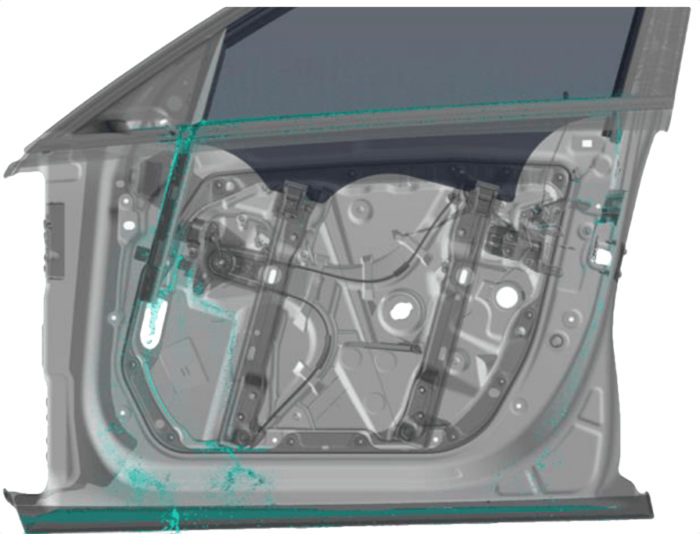

The safety of a car is influenced by environmental factors such as rain, snow, and mud. To prevent such influences from becoming a hazard, OEMs are required to design the vehicle body appropriately. A good design ensures clear vision of the road ahead, side mirrors and windows for the driver, as well as cameras and sensors for autonomous vehicles, reducing the need for various cleaning devices like sprayers or heaters. Avoid having to make design changes in the late stages of your development process by achieving early confidence in your designs that not only meet aesthetic requirements, but also increase the safety and comfort of your product. Save costs and time by testing in a virtual and controlled environment. While at the same time, increasing the safety and comfort of your product.
PreonLab fulfills your simulation needs and lets you efficiently simulate various different soiling scenarios. No matter if you are just interested in a specific part of the vehicle design or if you need to get insights about the whole system in interaction with different weather conditions: PreonLab keeps you covered without the necessity of a physical prototype or a costly climate tunnel.
You can easily perform a full wetting analysis and evaluate the flow paths while staying warm and dry.
Presented as “CFD Simulation of a Vehicle Driving in Snow” by D. Bäder, S. Eibl, C. Wolf, A. Oliva and P. Kolar from Audi AG and AVL Deutschland GmbH at the AVL Virtual Simulation Conference 2021. The setup has been realized with a static car, while the ground is moving and turning wheels have been modelled in PreonLab accordingly. In PreonLab, an Area Source has been specified, generating a specific layer of snow in front of the car. In order to reduce numerical effort, the snow particle behind the tires are deleted, saving a considerable amount of time. Of course, attention should be paid to details of the tire’s geometry since this is crucial in order to resemble the actual behavior of the snow interacting with the tire. Since it is often difficult to get an accurate tire geometry, the wheel was scanned separately with a high amount of resolution, so it was possible to take the winter tire’s profile into account in PreonLab simulation, to get more realistic snow accumulation in the wheelhouse.
The world is changing, and so is Audi. In order to keep up with the challenges faced in the context of digitalization, Audi established the simulation of water in the development process.
The Chair of Automobile Engineering at the TU Dresden is investigating and developing a tool chain for virtual water management for the automotive industry. Multiple simulation tools were evaluated for the task of predicting water paths on a car door. PreonLab compared favorably against other evaluated tools in terms of validated results, performance and usability:
The study was conducted by Daniel Wickert as part of his diploma thesis and was supported by Daimler AG.

Fully dynamic sprinkling simulation considering imported air flow velocities caused by the airstream of the moving vehicle. Additionally, the wiper activity is considered making this an example of a real world approximation of a vehicle driving in extensive rain.
The flat jet source will help you to recreate some of your real scenarios even more accurately in PreonLab and is especially useful for washing cases.
There is now a possibility to distinguish whether a drop of water touched the sensor surface briefly and whether the surface was covered in fluid for minutes. The wetting sensor allows you to colorize the surface given the amount of time it was in contact with fluid.
In PreonLab, snow is computed as an elasto-plastic continuous material, where the elastic part is solved implicitly. Different types of snow can be modelled ranging from chunky to powdery snow, from wet and adhesive to dry. Just like the Preon fluid solver, the snow solver can handle any imported geometries without meshing and offers competitive performance.
This opens a variety of interesting applications. For example, snow fall on a vehicle to optimize sensor locations for autonomous cars or the efficiency analysis of a snowplow.
We use cookies to ensure you the best experience on our website. This includes different types of cookies. You can decide which types of cookies you allow. Please note that based on your settings you may experience reduced functionality.